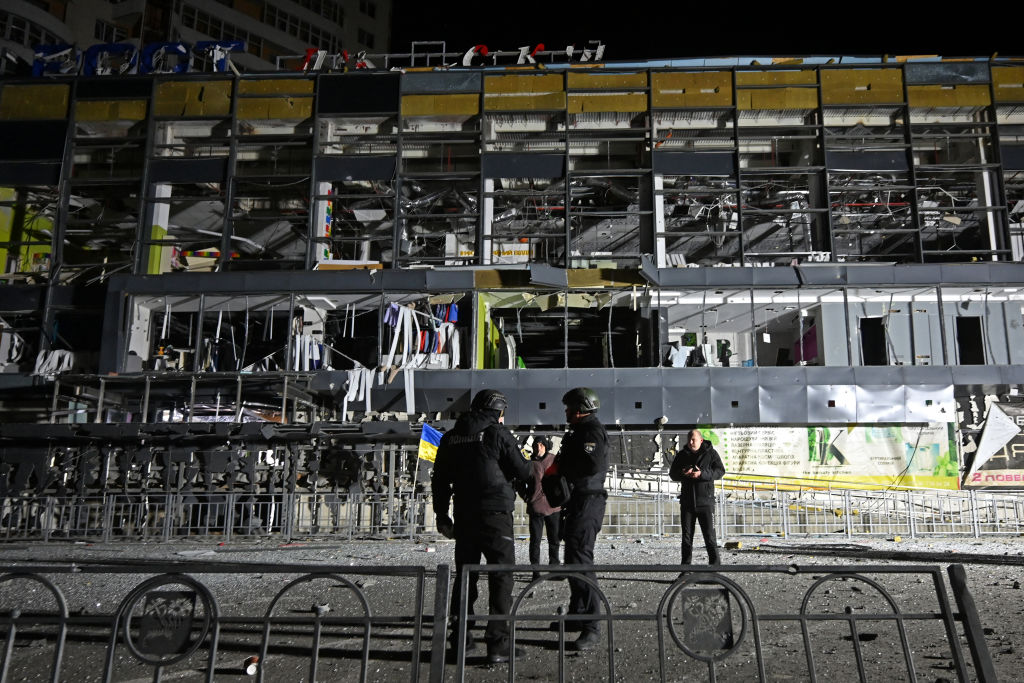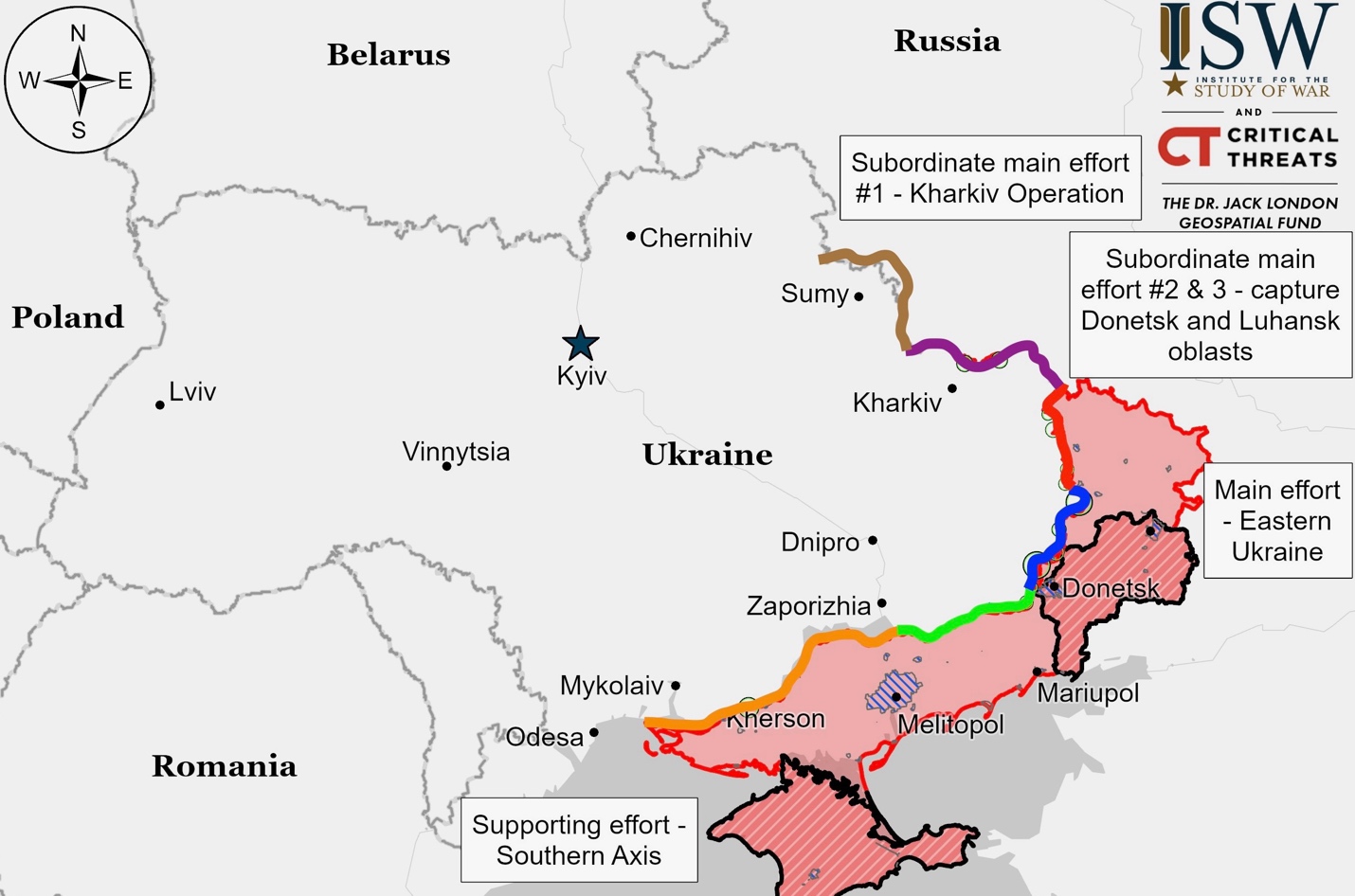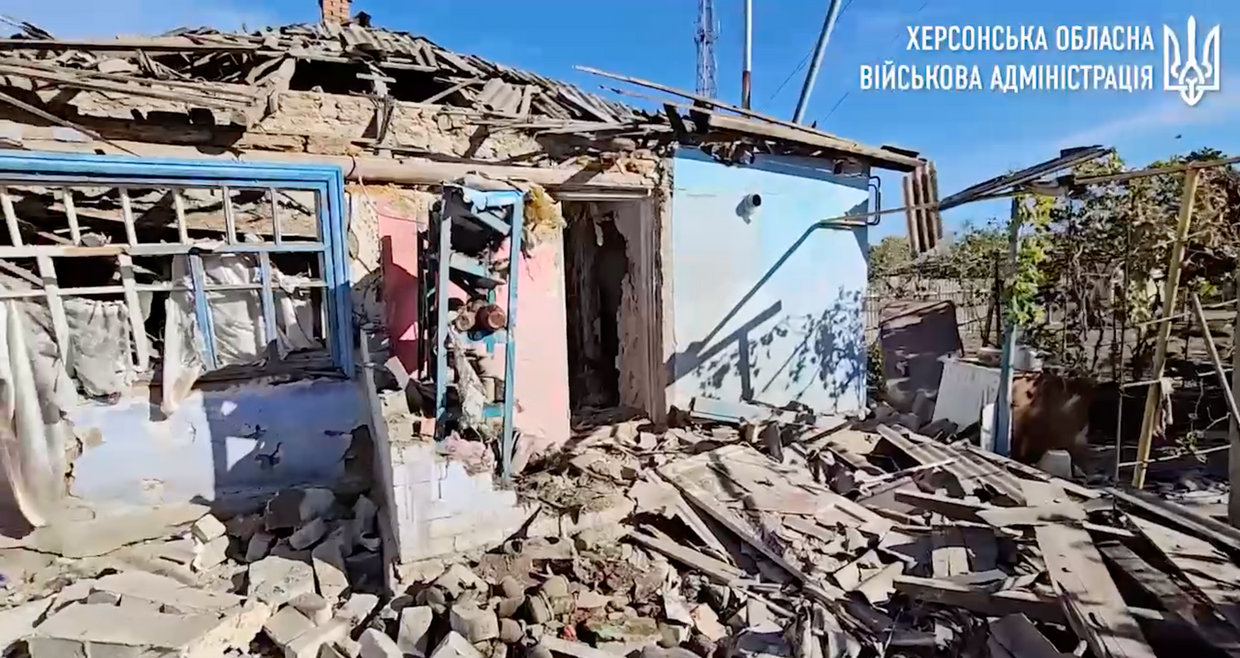Summary of the Day:
Pro-European incumbent Maia Sandu has claimed victory in Moldova’s presidential runoff election with approximately 55% of the vote. Moldovan authorities reported extensive Russian interference, including organized voter transport schemes, cyberattacks, and false bomb threats at polling stations abroad, in an apparent effort to favor pro-Kremlin candidate Alexandr Stoianoglo.
Russian forces have advanced near several key locations in Donetsk Oblast, including Siversk, Pokrovsk, Kurakhove, and Vuhledar. Meanwhile, Russian military effectiveness may be declining due to internal conflicts over drone operations, as commanders deliberately send drone specialists into infantry roles rather than lose them to new centralized drone battalions.
A dispute over prisoner of war exchanges has intensified, with Ukrainian Human Rights Ombudsman Dmytro Lubinets challenging Russian claims that Ukraine is blocking exchanges. Ukraine has demanded Russia provide a complete list of Ukrainian POWs available for exchange, while maintaining that Russian delays have forced them to construct a third POW camp. Ukrainian officials also report that Russia’s naval infantry units have lost their elite status due to the destruction of their professional core since the invasion began.
Picture of the Day:
 Ukrainian law enforcement officers stand next to a destroyed supermarket following a Russian attack against downtown Kharkiv (Sergey Book / AFP via Getty Images).
Ukrainian law enforcement officers stand next to a destroyed supermarket following a Russian attack against downtown Kharkiv (Sergey Book / AFP via Getty Images).
Beyond Ukraine – The March Towards World War
In a crucial victory for Western democracy and regional stability, pro-European incumbent President Maia Sandu has secured approximately 55% of votes in Moldova’s runoff election, defeating pro-Kremlin candidate Alexandr Stoianoglo. The election, which saw a robust 54% voter turnout, represents a significant setback for Russian influence in Eastern Europe and strengthens Moldova’s Western alignment at a critical time for European security. The result could help stabilize a region that has been increasingly tense due to ongoing geopolitical pressures, particularly given Moldova’s strategic location between NATO countries and Ukraine. Final results, including diaspora votes, are expected tomorrow.
Moldovan officials have reported extensive Russian interference during the presidential runoff election. According to National Security Advisor Stanislav Secrieru, Russian tactics included illegal voter transport from Transnistria, organized buses and flights to polling stations in Azerbaijan, Turkey, and Belarus, and cyberattacks against Moldova’s election commission. Additionally, Russian authorities reportedly transported 150 Moldovan citizens from Russia through Turkey to vote, while false bomb threats disrupted diaspora voting stations abroad. Prime Minister Dorin Recean reported voters received anonymous death threats, part of what President Sandu described as a multi-million-euro campaign by “criminal groups” and “foreign forces” attempting to buy 300,000 votes and destabilize the electoral process.
The closure of Finland’s Lenin Museum represents a significant shift in East-West relations, highlighting growing tensions between Russia and its neighbors. The museum’s transformation from a Soviet-era memorial into “Nootti,” a museum examining Finnish-Russian relations, symbolizes the broader deterioration of diplomatic ties following Russia’s 2022 invasion of Ukraine. The change is particularly meaningful given the site’s historic role in Soviet leadership meetings and Finland’s recent strategic pivot toward NATO – a move that dramatically altered the military balance in Northern Europe by adding 830 miles to NATO’s frontier with Russia. This development reflects the continuing erosion of post-Cold War peace structures and signals the deepening divide between Russia and Western-aligned nations.
Situation On The Land, Sea, and Air in Ukraine
Russian military effectiveness is declining as commanders deliberately disrupt drone operations, according to Russian opposition outlet Vazhnye Istorii. The Defense Ministry’s attempt to centralize drone operations into specialized battalions has sparked resistance, with commanders sending drone operators into dangerous infantry roles rather than losing them to the new units. This practice has led to high casualties, including the deaths of two notable operators, Dmitry Lysakovsky and Lt. Col. Sergey Gritsai, during infantry assaults in Donetsk Oblast. Most companies now operate with only 20 regular assault personnel out of 90 troops, while poor communication systems between units further hamper effectiveness.
Ukraine’s Navy spokesperson Dmytro Pletenchuk stated that Russian naval infantry units have lost their elite status. He explained that these units now lack proper specialized training and have suffered heavy losses since Russia’s invasion began. According to Pletenchuk, these once-elite forces now operate like regular infantry units.
UN Secretary-General Antonio Guterres expressed serious concern over reports that 8,000 North Korean troops are stationed in Russia’s Kursk Oblast, potentially preparing to join Russian forces in Ukraine. Guterres warned this would represent “a very dangerous escalation” of the conflict. President Zelensky has urged international allies, particularly China and Western nations, to take action rather than just observe. The situation has heightened tensions between Ukraine and the UN, especially after Guterres met with Vladimir Putin at the BRICS summit in October, leading Zelensky to decline a subsequent UN visit to Ukraine.
Russia is increasingly using unidentified chemical gases against Ukrainian troops along the eastern front line, particularly in the Pokrovsk, Chasiv Yar, and Kupiansk areas. According to Ukrainian Colonel Artem Vlasiuk, of 323 chemical attacks recorded in October, almost all involved unidentified gases that Ukraine cannot properly detect due to a lack of sophisticated detection equipment. Russian forces typically deploy these gases via drone-dropped grenades into Ukrainian positions, forcing soldiers into the open where they become vulnerable to artillery and drone attacks. While Ukraine has confirmed some uses of CS tear gas, ammonia, and chloropicrin, most recent attacks involve unknown substances. Ukraine reports that at least three soldiers have died and about 2,100 have required medical treatment from these attacks. While the U.S. and U.K. have acknowledged and sanctioned Russia for these chemical warfare tactics, gathering definitive evidence remains challenging due to Ukraine’s limited detection capabilities.

Ukrainian Operations in the Russian Federation – Initiative None
Russian forces reportedly made advances in Ukraine’s main salient in Kursk Oblast. Russian military bloggers claim their forces moved forward near several settlements including Pogrebki, Novaya Sorochina, and Malaya Loknya. They also reportedly attacked near Lyubimovka and Tolsty Lug. While Russia’s Defense Ministry claims they stopped Ukrainian counterattacks near Malaya Loknya, Novoivanovka, and Plekhovo, these claims lack visual confirmation. No fighting was reported in the Glushkovsky Raion area.
Russian officials report their forces intercepted 16 drones over Rostov Oblast, near the cities of Novoshakhtinsk, Kamensk, and Ust-Donetsk. A Russian opposition news outlet, Astra, released footage showing a large fire near Novocherkassk, allegedly caused by one of the drone strikes.
Kharkiv Front – Initiative Russia
Russian forces continued limited attacks near Vovchansk and Hatyshche, northeast of Kharkiv City, but made no advances. A Ukrainian brigade spokesperson reported that Russian forces are using deteriorating weather conditions to their advantage, conducting small infantry assaults and strengthening positions north of Kharkiv Oblast, particularly near Lyptsi where the ground is beginning to freeze. Reports indicate Russian forces are using civilian vehicles instead of armored ones in recent attacks, while Ukrainian forces are preparing anti-tank defenses in case of a larger Russian offensive in northern Kharkiv Oblast.
Luhansk Front – Initiative Russia
Russian forces advanced near Svatove and Kreminna, with confirmed progress on the eastern edge of Andriivka and in northern Terny. Russian sources claim advances near Petropavlivka and Stelmakhivka, though reports of Russian forces entering Serebryanka were denied. The Ukrainian General Staff reported ongoing Russian offensive operations across multiple locations, including areas north, northeast, and southeast of Kupyansk; west and southwest of Svatove; and around Kreminna. Ukrainian sources indicate that Russian forces are using wounded personnel to maintain assault intensity. Ukrainian forces reportedly launched counterattacks near Kolisynkivka and Kruhlyakivka.
Donetsk Front – Initiative Russia
Siversk
Russian forces launched a significant mechanized assault southeast of Siversk, making minor advances near Vesele and Ivano-Darivka. The attack involved approximately 120 Russian troops, seven tanks, and 15 armored vehicles. Ukrainian forces report they successfully defended against the assault, claiming to have destroyed six tanks and nine infantry fighting vehicles while inflicting 42 Russian casualties.
Chasiv Yar
Russian forces continued attacks on Chasiv Yar and nearby Predtechnye but failed to advance. While Russian troops are crossing the Siverskyi Donets-Donbas Canal in small groups and attempting to hide in Chasiv Yar’s urban areas, they haven’t established permanent positions west of the canal. Ukrainian officials report that Russian forces are using new electronic warfare equipment against Ukrainian drones, but with limited success. They also note that while Russia is moving experienced drone operators to priority areas, drone operations near Chasiv Yar have declined in quality.
Toretsk
Russian sources, including their Defense Ministry, claim to have captured Leonidivka, southwest of Toretsk, though this remains unverified. Russian forces continued attacks on eastern Toretsk and near Shcherbynivka. Ukrainian spokesperson Major Anastasiya Bobovnikova reports that while Ukrainian forces have stabilized the frontline in eastern Toretsk, Russian forces are bringing in reserves, equipment, and installing electronic warfare systems, suggesting preparation for increased offensive operations.
Pokrovsk
Russian sources claim their forces advanced south and southeast of Pokrovsk reportedly reaching eastern Novooleksiivka and areas southeast of Lysivka. While Russia’s Defense Ministry claims to have captured Vyshneve, this remains unconfirmed. Russian forces continued attacks across multiple settlements including Mykolaivka, Promin, Sukha Balka, Myrolyubivka, Vyshneve, Krutyi Yar, Selydove, Sukhyi Yar, and Novohrodivka.
Kurakhove
Russian sources claim their forces advanced north of Kurakhove, particularly near Novodmytrivka and Novoselydivka. Russian forces continued attacks across several settlements including Novoselydivka, Novodmytrivka, Kreminna Balka, Hostre, Vovchanka, Illinka, and Maksymilyanivka. A Ukrainian brigade spokesperson reports that Russian mechanized assaults continue in the Kurakhove area, noting that defense has become more challenging since Summer 2024. Russian forces are reportedly shifting their focus to southern operations in this area following their capture of Vuhledar.
Southwest of Donetsk City
Russian forces made confirmed advances near Vuhledar. Russian forces advanced in eastern Antonivka and captured Maksymivka. Russian forces also seized Katerynivka and advanced toward a bridge east of Yelyzavetivka. While Russian sources claim advances between Maksymivka and Yasna Polyana, this remains unconfirmed. Fighting continues near several settlements including Trudove, Antonivka, Katerynivka, Kostyantynivka, and Maksymivka.
Zaporizhia Front – Initiative Russia
Zaporizhia-Donetsk Border Area
No fighting was reported along the Donetsk-Zaporizhia Oblast border area by either Ukrainian or Russian sources.
Zaporizhia Line
Russian forces made small advances during ground attacks in western Zaporizhia Oblast. They reportedly moved forward near several settlements including Robotyne, Verbove, and Novopokrovka. While Russian sources claim advances of up to 1.5 kilometers in some areas, these claims haven’t been independently verified. Ukrainian military reported Russian attacks near Robotyne, Yurkivka, Novodanylivka, and Mala Tokmachka.
Kherson (Dnipro River) Front – Initiative Russia
Russian forces launched ground attacks in eastern Kherson Oblast along the left bank of the Dnipro River. Fighting occurred near Kozachi Laheri, Dnipryany, and Kozatskyi Island. Russian sources claim they repelled Ukrainian counterattacks in the Dnipro River delta area.
Ukraine News
Russia launched a major aerial attack against Ukraine overnight using 96 drones and a guided missile launched from various regions including Kursk and Bryansk. Ukrainian forces intercepted 66 drones and one missile across multiple regions including Kyiv, Sumy, and Kharkiv. In Dnipropetrovsk Oblast, a Russian missile strike damaged railway infrastructure and injured eight civilians. In Kyiv, drone debris caused damage in several districts including Shevchenkivskyi, Holosiivskyi, and Desnyanskyi. I personally was staying at a hotel in the Holosiivskyi district and had to sleep on the floor of the restroom for another wall of protection. Dozens of drones exploding from Ukraine air defense systems kept me up for five hours. Russian forces also struck civilian infrastructure in Shostka, Sumy Oblast with eight drones.
Ukrainian Air Force spokesperson Colonel Yurii Ihnat reported that Russia has been using cheaper imitation Shahed drones alongside real ones, with many of these knockoffs being lost to electronic warfare. President Zelensky revealed that in just one week, Russia launched 900 bombs, 30 missiles, and nearly 500 Shahed drones, mostly targeting civilian infrastructure. In October alone, Russia deployed over 2,000 Shahed drones, which Zelensky noted contain components from China, the US, and Europe, prompting calls for stricter sanctions enforcement.
Ukraine’s Human Rights Ombudsman Dmytro Lubinets has challenged Russian officials’ claims that Ukraine is blocking prisoner of war exchanges. On November 2, Lubinets responded to accusations from Russian Ombudsman Tatyana Moskalkova and Foreign Ministry Spokesperson Maria Zakharova by demanding Russia provide a complete list of Ukrainian POWs available for exchange. While exchanges increased after Ukraine’s incursion into Kursk Oblast in August 2024, Ukraine maintains that Russia is deliberately delaying the process, noting they had to build a third POW camp due to delays. The dispute comes amid ongoing reports of Russian human rights violations against Ukrainian POWs.
Google Maps recently displayed sensitive locations of Ukrainian weapons systems in their satellite imagery, according to Ukraine’s National Security Council official Andrii Kovalenko. After public concern was raised and Russian forces began sharing the images, Google contacted Ukrainian authorities and is now working to address the security issue. The company has committed to establishing better protocols for handling similar sensitive situations in the future.
A recent Economist/Globescan poll of 30,000 people across 30 countries shows 54% support for a Ukrainian victory in the war, compared to 20% favoring Russia. Even in countries with neutral or pro-Russian governments like Brazil and South Africa, citizens backed Ukraine. Support was strongest in the U.S. and South Korea. Only five countries – Egypt, India, Indonesia, Saudi Arabia, and Vietnam – showed stronger support for Russia.
Innocent Victims Of War
The casualty count of civilians in the past 24 hours: (Russian War Crimes)
DEATHS: 3 INJURIES: 40
Russian forces struck Kharkiv’s Shevchenkivskyi district hitting a supermarket and residential buildings. The attack wounded 14 people, including four police officers, and damaged apartments, businesses, cars, and power lines. Rescue efforts continue in this latest assault on Kharkiv’s civilian areas.
Russian forces shelled Bilozerka village in Kherson Oblast on November 3, injuring a paramedic and ambulance driver who were outside during the attack. The victims suffered multiple injuries, including concussions and shrapnel wounds. The attack also damaged a medical facility, an ambulance, and a house.
Russian attacks on Donetsk Oblast killed two people in Ivanopillia and wounded one person in Myrnohrad, damaging multiple residential buildings and infrastructure. The damage included ten houses, two apartment buildings, and an industrial facility.
Russian forces attacked Kherson and 16 other settlements in Kherson Oblast, killing one person and wounding 10 others, including three children. Extensive damage to residential and civic buildings was reported, including 14 houses, five apartment buildings, schools, a library, a church, a post office, and shops.
Russian forces struck infrastructure near Dnipro wounding eight people, including two children. Russian artillery and drone attacks across Dnipropetrovsk Oblast damaged an industrial site, homes, farm buildings, infrastructure, and vehicles.
A Russian guided aerial bomb struck the front-line village of Preobrazhenka near Polohy in Zaporizhzhia Oblast, wounding two civilians aged 55 and 45. Russian attacks in the region had also damaged six houses and infrastructure facilities.
A Russian drone attack near Vovchansk in Kharkiv Oblast injured two men, aged 33 and 60. Russian strikes in the region damaged a farm and an educational facility.
A Russian drone strike on Kyiv injured an 82-year-old woman with shrapnel wounds to her head and caused fires in both a 16-story residential building and an office building.
 A house destroyed by a Russian attack against the village of Zelenivka, Kherson Oblast. (Screenshot/Kherson Oblast Military Administration)
A house destroyed by a Russian attack against the village of Zelenivka, Kherson Oblast. (Screenshot/Kherson Oblast Military Administration)
Ukrainian Mobilization and Industrial Defense Base
Ukraine’s parliamentary defense secretary Roman Kostenko has called for mobilizing 500,000 additional citizens, citing current battlefield needs. This aligns with former Commander-in-Chief Zaluzhny’s earlier recommendation but exceeds the current plan to draft 160,000 men. President Zelensky previously estimated such large-scale mobilization would cost 500 billion hryvnias. Ukraine currently has 1.05 million serving troops but faces challenges in maintaining adequate force levels to both replace casualties and rotate long-serving soldiers from the front lines.
Ukraine’s Allies
U.S. Ambassador Bridget Brink announced that U.S.-funded mobile fire teams in Ukraine have successfully intercepted over 200 Russian drones since January 2024. The State Department has supported 800 such teams, staffed by Ukraine’s National Guard and Border Guard Service, to protect infrastructure and civilians. Russia has increasingly relied on Iranian-designed Shahed drones for attacks, with Ukraine reporting they intercepted 1,107 out of 1,339 such drones in September alone.
Russian War Losses (Today/Total)
Troops +1300
700390 |
Tanks +11
9193 |
Artillery +35
20121 |
Arm. VEH +15
18538 |
Aircraft 
369 |
Heli
329 |
Ships
28 |
Russian Mobilization and Defense Industrial Base
Russian officials announced that President Putin has granted Russian citizenship to 3,344 foreign fighters who joined Russian forces in Ukraine since early 2024. This is part of Russia’s strategy to attract foreign recruits by offering them citizenship in exchange for military service.
Russia’s Defense Ministry reported that 200 students at the Mariupol branch of St. Petersburg’s Nakhimov Naval School swore allegiance to Russia. The students reportedly came from over 30 regions, likely including occupied areas of Ukraine.
Russian state media TASS reported on November 3 that Russian technicians are testing ways to hijack decommissioned NATO satellites for military communications, particularly when ground communications are blocked by electronic warfare.
Ukrainian sources released footage showing Russia using new AI-equipped reconnaissance drones. These drones reportedly can detect incoming enemy drones and automatically maneuver to avoid being hit.
Russia’s Allies
Hungarian Prime Minister Viktor Orban said that if Donald Trump wins the U.S. presidency, “Europe cannot remain pro-war,” referring to EU’s support for Ukraine. Orban, who has consistently opposed aid to Ukraine and maintains close ties with Trump, recently met with both Russian President Putin and Chinese leader Xi Jinping during his self-described “peace tour.” He dismissed Ukrainian President Zelensky’s victory plan as “dangerous” and is reportedly preparing to help Trump potentially block a $50 billion loan package for Ukraine. Trump has claimed he could end the Russia-Ukraine war in 24 hours but hasn’t explained how.
Source Material
Institute for the Study of War – understandingwar.org
The Kyiv Independent – kyivindependent.com
Kyiv Post – kyivpost.com
